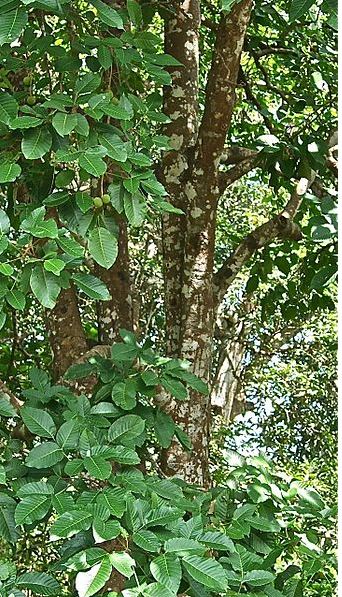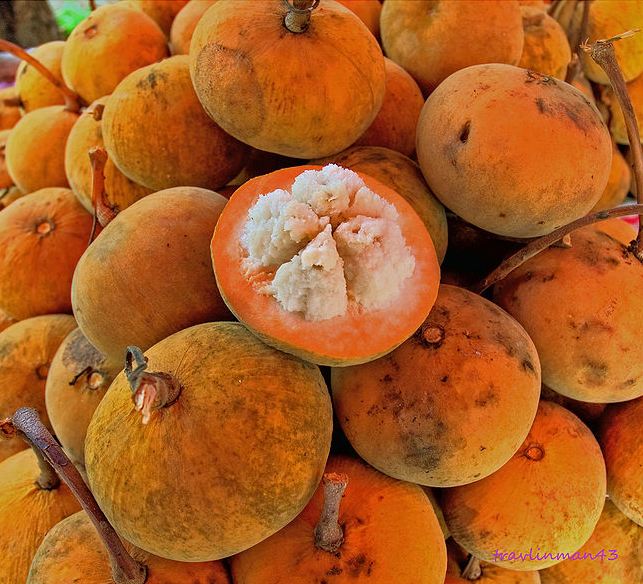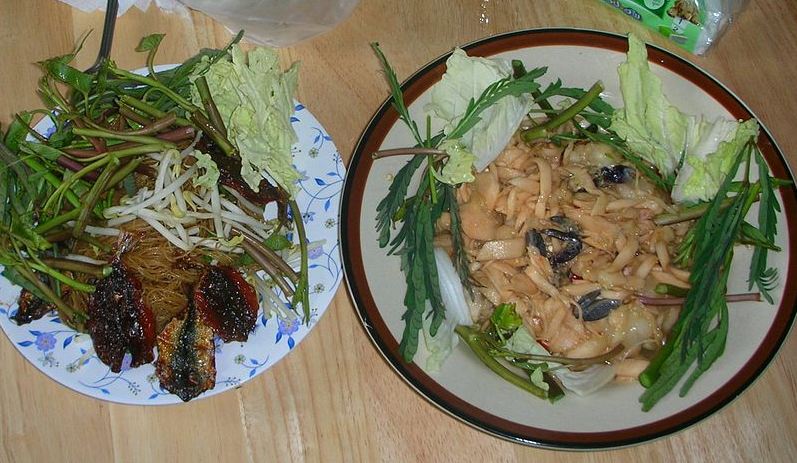There are thousands of fruit varieties in the world, so it makes sense if we aren’t familiar with all of their names. However, it’s always good to try new things, and fruits are one of the most beneficial options we can have for our diet. Knowing about different and perhaps little-known fruits can also help to give our palate some variety so that clean and healthy eating won’t be so monotonous.
When talking about uncommon yet healthy fruits, we should also take a look at Sandoricumkoetjape, or the santol fruit. The name ‘santol’ is simple enough, but we can also refer to it as the ‘cotton fruit’ for more familiarity. Let’s have a closer look at this fruit option now:
About Santol
The santol is a tropical fruit that’s native to Malesia, or maritime Southeast Asia. It originated from the floristic region of Malaysia, but has also successfully grown in regions of Sri Lanka, northern Australia, Indochina, India, Seychelles, and Mauritius. Its cultivation in these areas is quite common, so we might be able to get santol in a local or international market.
The appearance of the santol is a unique one. The color could be either red or yellow, but the species remains the same. Of these two, the reddish shade is more common. Both shades are quite pleasing to the eye, though many consumers feel that the red leaves mix with green make for the best eye-catching display.
The fruit itself is around the same size and shape as a regular peach, with the same kind of fuzzy skin surrounding it. The peel could vary in levels of thickness, though the inside might have a milk-like juice. Like the peach, the santol’s peel is also edible, so you can eat it like an apple as well.
At the center of a santol, just when you start getting to the seeds, the pulp of the santol might give a sour or sweet experience. However, the main portion that’s edible is near the outer rind. The taste of this fruit is reminiscent of peaches, with the pulpy center tasting more like apples.
Since the inner flavor of the santol is sometimes very sour, its popularity has also decreased as a result. Still, there are some improved varieties of this fruit that are usually sweet in the middle. These new offerings have also made the outer rind thicker, so we can use it as a bowl and eat the inner pulp with a spoon. Think of it as eating a soft boiled egg or a type of kiwi fruit.
The appearance of the santol tree is also interesting, as it’s a fast-growing species that could reach up to 150 feet in its lifespan. The leaves on this tree are of the ribbed kind, while the flowers could be either yellow-green or pink, around one centimeter in length.
How to Consume Santol
Ripe santol fruits can be harvested by manual plucking, or by using a long forked stick. The pulp can be consumed raw on its own, though some people do like to add spices before eating.
Santol can also be candied, made into a marmalade, candied,
twist the fruits off. The pulp is eaten raw and plain or with spices added. It is also cooked and candied or made into marmalade. There are different ways of cooking this fruits, including the following:
- A Filipino recipe involves grating santol rinds and then cooking it with hot pepper, bits of meat, and coconut milk. The resulting dish is called sinantolan. Partly ripe santol, which have a sour taste, are also utilized as an ingredient in sinigang and other sour dishes
- A Thai recipe used unripe santol in making som tam. The fruit is also used in a Thai curry with prawns.
What We Get From the Santol Fruit
There are several health benefits of santol fruit, the most major ones of which are:
- Vitamin C: We usually think of grapefruits and oranges as our main sources of vitamin C. However, this essential nutrient can also be found in different kinds of fruit such as the santol.
- Iron: We all need a certain amount of iron in our bodies in order to have a healthy metabolic system. With iron, our body can regenerate and control its red blood cells. It’s also good for regulating body temperature, brain function, and preventing anemia.
- Fiber: Santol also has a fair amount of fiber in it, which can help us maintain a healthy digestive system. A large intake of fiber can help us in losing weight since it fills the stomach so effectively.
- Calcium: this is necessary for having a healthy bone system and preventing osteoporosis.
- Healthy Carbohydrates: We need carbohydrates to get energy. With choices like the control fruit in our diet, we’re assured of a healthy and lasting energy source that won’t let us crash too quickly
- Potassium: if we’re facing a potassium deficit, the santol fruit might be able to help us overcome that lacking. Getting enough potassium will help us stabilize the muscle cells and major organs I our bodies.
Other Uses of Santol
The santol fruit has its own health benefits, but the plant’s leaves and bark have medicinal uses as well. Some cultures and practices use these two as ingredients when making a poultice. They’re not just a soothing choice for anti-inflammatory benefits, but the santol stems also have certain chemical extracts with possible anticancer properties. Plus, the santol seeds have insecticidal properties, which might be good news for those in need of a natural alternative.
Warnings About Santol
While the santol fruit might be a popular one among those who know it, we have to keep in mind that it does have certain risks as well. For instance, if someone swallows the seeds of this fruit whole, they might get obstructions and perforations in their intestines.
It’s estimated that there might be around two hundred cases of such problems every year within the Philippines alone. A larger variety called the Bangkok santol is usually responsible for the more serious cases that require abdominal surgery.
The symptoms of this problem usually include abdominal pain and inflammation of the peritoneum. The latter is a silky sort of membrane covering the abdominal organs and the inner wall of the abdomen itself. When this membrane gets inflamed, the result might be a septic shock. At the very least, the patient would require surgery to get the seeds out of their system.
Conclusion
Despite the warnings about santol seeds, it seems like there are a lot of advantages we can get from this fruit. Since the health benefits outweigh the risks and the taste seems quite intriguing, it might be a good idea to give this fruit a try whenever we see it in the market. We shouldn’t stand to risk our life or health as long as we’re extra careful about avoiding the seeds.




